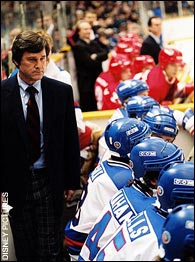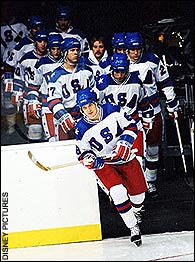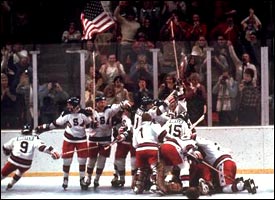| ESPN.com: Page3 |
 | |
| "Miracle" is really the story of how Herb Brooks molded his team, and Kurt Russell plays that role perfectly. |
 | |
| For the most part, "Miracle" the movie was well diagrammed. |
 | |
| Director Gavin O'Connor insisted on casting hockey players who could act ... not actors who tried to play hockey. |
 | |
| Brooks led a bunch of college kids to the greatest upset in sports history. |
 | |
| A nice family moment for Team USA. |
 | |
| Team USA celebrates after its shocking 4-3 victory over the Soviets in 1980. |